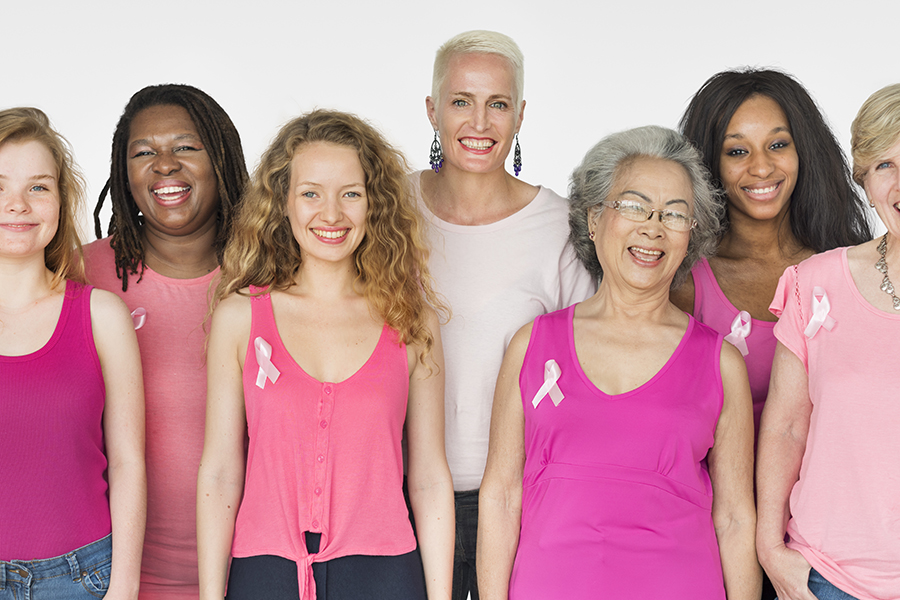Seven Steps to Your Reduce Your Personal Risk for Breast Cancer
There is a lot of information about breast cancer risk, prevention, and detection. But, how do you know what’s best for your long-term breast health?
The experts at the BreastCare Center at Yavapai Regional Medical Center (YRMC) have identified seven steps to help you answer that question. In keeping with Share the Care, the BreastCare Center’s community-wide program to support good breast health practices, we encourage you to share this information on social media and during other conversations with the women who are important to you.
“You can Share the Care year-round and in many ways,” said Michael G. Macon, MD, Breast Surgeon and Medical Director of the BreastCare Center at YRMC. “This list has good information about learning your risk for breast cancer, creating a personal plan based on your individual risk, and committing to healthy living practices.”
In Yavapai County, these steps are particularly important as we have high rates of breast cancer, according to the National Cancer Institute.
Now, let’s look at seven ways you may be able to lower your risk for breast cancer.
1
Know your family history and your risk for inherited breast cancer.
Understanding your risk for breast cancer that is inherited begins by mapping your family’s cancer history. Here are factors to determine if you may be at risk for inherited breast cancer:
You had breast cancer before age 50.
You had ovarian cancer.
You have relatives with breast, ovarian,
pancreatic, or prostate cancer.
There are men in your family who have
had breast cancer.
You are of Ashkenazi Jewish ancestry.
A family member has a BRCA1 or BRCA2
genetic mutation.
2
Consider genetic testing and counseling … from a professional.
Genetic counseling is more than mailing your saliva to an online service for analysis and a report, according to Jody Pelusi, PhD, FNP, AOCP, Oncology Nurse Practitioner at YRMC’s BreastCare Center. Dr. Pelusi is a genetics expert who oversees YRMC’s recently launched High Risk Genetic Clinic. She emphasizes the importance of identifying whether someone may be at increased risk for a gene alteration as young as possible so a plan, based on genetic test results, can be developed to manage and monitor people who are at an increased risk.
“We look at all risk factors as well as genetic testing results,” said Dr. Pelusi. “Most women who are at high risk for breast cancer do not have gene mutations. For example, we may recommend increased imaging surveillance for a woman who is found to be at high risk for breast cancer.”
That may mean alternating Breast MRI scans with mammograms at six month intervals, instead of having yearly mammograms. Or, depending on a woman’s age, risk factors and genetic test results, doctors may offer her adjuvant hormonal therapy or surgery to reduce the risk of breast cancer.
“By beginning interventions at a younger age,” said Dr. Pelusi, “we have the opportunity to change whether or not breast cancer ever occurs in these women.”
3
Get regular breast screenings.
This simple message has become more complicated in the past decade. Many believe that’s due to a 2009 update in breast cancer screening guidelines by the U.S. Preventive Services Task Force (USPSTF), an independent group of national experts in prevention and evidence-based medicine. In fact, a recent study in JAMA Surgery showed mammography screening is down among younger women since the USPSTF update.
Talking with your doctor about your individual risk and health history is a good place to begin when considering breast screening. As a general guideline, YRMC’s BreastCare Center and the American College of Radiology recommend annual mammography start at age 40 for women at average risk of developing breast cancer.
Additionally, the American Cancer Society (ACS) states that women ages 40 to 44 should have the choice to begin annual mammography. The ACS endorses annual mammograms for women ages 45 to 54. For women 55 and older, the ACS supports mammograms every one to two years.
4
Watch your weight, especially after menopause.
Being overweight or obese at any age increases a woman’s breast cancer risk, but it’s especially true after menopause and for women who gain weight as adults. Why is that? After menopause, most of a woman’s estrogen comes from fat tissue. The more fat tissue, the more chance of breast cancer due to raised estrogen levels. Also, overweight women tend to have higher levels of insulin, which has been linked to breast and other cancers.
5
Get your heart rate up on a regular basis.
Getting your workout is a good breast-healthy habit. You should aim for a weekly minimum of 150 minutes of moderate-intensity (think brisk walking), 75 minutes of vigorous activity spaced out across the week, or a combination of both.
6
Get off your seat.
There’s more and more evidence that shows sitting time increases the likelihood of cancer, especially for women. An ACS study showed women who spent six hours or more each day sitting when not working had a ten-percent greater risk for breast cancer.
7
Limit your alcohol intake.
Women who have two to three alcoholic drinks a day have a 20 percent greater risk of breast cancer compared to women who don’t drink alcohol. Women who have one drink a day have a very small increased risk for breast cancer.
Want to learn more about Share the Care or services at YRMC’s BreastCare Center? Visit HealthHealingHope.org or call the Center at 928.442.8900 or 1.877.436.5290. Contact Dr. Macon or Dr. Pelusi at 928.442.8740 and the YRMC High Risk Genetic Clinic at 928.442.8747.

